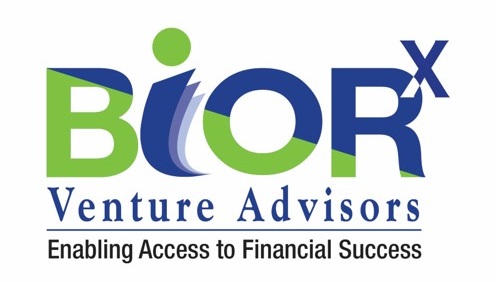By user
FUNDRAISING: THE LIFELINE OF GROWTH
Fundraising is a crucial process that involves securing financial resources to support a specific course, project, or organization. This vital endeavour involves soliciting funds from various sources, including individuals, businesses, and other organizations, to further a particular cause. Fundraising is not merely a means of fuelling an organization’s growth and development but also a vital component of sustainable development. For businesses, fundraising can be a powerful tool for building and expanding their future prospects. By securing additional funds, companies can increase their operational scope, attract a pool of skilled professionals, and introduce innovative products or services to the market. This, in turn, enables them to develop a more comprehensive strategy, refine their processes, and leverage cutting edge technologies to enhance their efficiency and productivity.
Moreover, fundraising can help organizations plan their long-term goals, design effective processes, and develop new technologies to stay ahead of the competition. By securing the necessary funds, businesses can invest in research and development, expand their market reach, and create new growth opportunities. Ultimately, fundraising plays a vital role in supporting the growth and development of organizations, enabling them to achieve their objectives and make a lasting impact in their respective fields.
STAGES OF FUNDRAISING
Founders go through different stages when it comes to fundraising as they seek capital to finance their ventures. Understanding these stages is crucial for any organization to navigate the fundraising landscape effectively.
2. Startup Funding Stage: Once the idea has been validated and a prototype developed, the startup stage involves refining the product or service and preparing for market entry. This stage attracts angel investors – affluent individuals who provide capital for startups, often in exchange for convertible debt or ownership equity. Early-stage venture capitalists may also get involved if they see the potential for significant growth and returns. This funding is required for product development, hiring employees, or acquiring customers.
3. Growth Funding Stage: When business projects grow into fully-fledged enterprises, the founders may want additional funding to expand into new areas or improve existing products. This is when they may switch to Series B, C, D, and so on. Fundraising rounds can be significantly larger, sponsored by larger venture capitalists and private equity investors who feel the company has the potential for high profits.
4. Expansion Funding Stage: Mature companies that have established their market presence and are generating consistent revenue may require additional funds for significant expansion efforts, such as entering new markets or acquiring other companies. This stage can involve private equity investors who bring in large sums of money for a stake in the company or late-stage venture capitalists looking for lower-risk investments in established businesses.
5. Public Funding Stage (IPO): The final stage of fundraising is often an Initial Public Offering (IPO), where a company offers its shares to the public in a new stock issuance. This allows the company to raise capital from public investors and provides an exit opportunity for early investors. An IPO represents a significant milestone as it subjects the company to public scrutiny and regulatory compliance but also opens up vast opportunities for growth through public financing.
Each stage of fundraising requires a different approach, mindset, and set of resources. It’s a journey that requires careful planning, hard work, and intelligent decision-making to get the right amount of money at the right time. Successfully moving through these stages can lead to sustainable growth and long-term success.
Fundraising Process
The fundraising journey is a meticulous and strategic process that requires careful planning, execution, and relationship management. Here’s a detailed look at each step in the journey:
1. Preparation: This involves developing a robust business plan that outlines the business model, market analysis, competitive landscape, financial projections, and growth strategy. Additionally, creating a compelling pitch deck that succinctly presents the business case to potential investors is crucial. This preparation sets the stage for successful fundraising by clearly defining the value proposition and investment opportunity.2. Targeting Investors: With preparation complete, the next step is to identify and target potential investors who are a good fit for the business’s stage, industry, and funding needs. This involves researching investor’s portfolios, investment thesis, and past funding activities to ensure alignment with the business’s goals and values. Building a targeted list of investors increases the chances of securing meetings and ultimately, investments.
3. Pitching: The pitching phase is where entrepreneurs get the opportunity to present their business to potential investors. This involves scheduling meetings, networking events, or pitch competitions where they can showcase their pitch deck, demonstrate their product or service, and articulate their vision. The goal is to engage investor’s interest and convince them of the business’s potential for success and profitability.
4. Due Diligence: Interested investors will conduct due diligence to validate the claims made during the pitch. This involves a thorough examination of the business’s financials, legal documents, market research, team credentials, and any other relevant information. Entrepreneurs must be prepared to provide detailed documentation and answer probing questions as investors assess the risks and rewards associated with the investment.
5. Negotiation & Deal Closure: Once due diligence is satisfied, negotiations begin. This stage involves discussing terms such as valuation, equity stake, voting rights, and exit strategies. It’s a delicate balance between securing necessary funds and maintaining control over the business. Once terms are agreed upon, legal agreements are drafted, reviewed by both parties’ legal counsel, and signed to formalize the investment.
6. Post-Funding Relationship Management: After securing funding, maintaining a positive relationship with investors is key. Regular updates on business progress, transparent communication about challenges and successes, and involving investors in strategic decisions when appropriate help foster trust and can lead to further support in future funding rounds.
The fundraising journey is iterative and may require multiple attempts before securing investment. It demands resilience, adaptability, and a willingness to learn from feedback and rejections. Successfully navigating this journey can provide not just financial capital but also valuable partnerships that contribute to long-term business success.
Common Challenges of Fundraising
1. Reaching Out to Investors: To interest investors in the project, as many emails, calls, and meetings as necessary are required. Depending on the situation, this can be tiresome and may take considerable time, and it involves a lot of communication commitments.
2. Balancing Fundraising with Operations: This is a dilemma because founders are required to raise capital and look after their business activities simultaneously. This might be challenging, mainly if it is a new company that has yet to attract any investors or have any income flow.
3. Building a Complementary Team: The co-founders must possess different skills and expertise. A balanced team is self-sufficient and can cover all the business needs, including creating new products and services, promoting, and searching for funds.
4. Investor Expectations: Enterprises must conform and respond to investor expectations, deliver reports, establish and prove progress, and deliver growth benchmarks.
5. Due Diligence: People like to focus on due diligence when evaluating an emerging firm and judging whether it can grow and flourish. It is about your business ideas, plans, financial prospects, customers, and target markets.
Conclusion
Fundraising is more than just securing capital; it’s about forging partnerships and alliances that can propel a business forward. It’s about demonstrating resilience in the face of rejection and learning from each interaction to refine the pitch and strategy. The endgame of fundraising isn’t merely about the funds raised but also about the relationships built, the credibility established, and the strategic positioning achieved for future growth. Successful fundraising can be a game-changer for businesses and organizations. It can provide the resources needed to innovate, expand, and disrupt markets. However, it also brings with it a responsibility to deliver on promises made to investors and stakeholders. Transparency, accountability, and good governance become paramount as a venture grows with its investor’s support.
In conclusion, Fundraising is a multifaceted journey that requires careful planning, a compelling pitch, and perseverance through challenges. Success in fundraising can propel a business forward, enabling it to achieve its goals and make a lasting impact.



